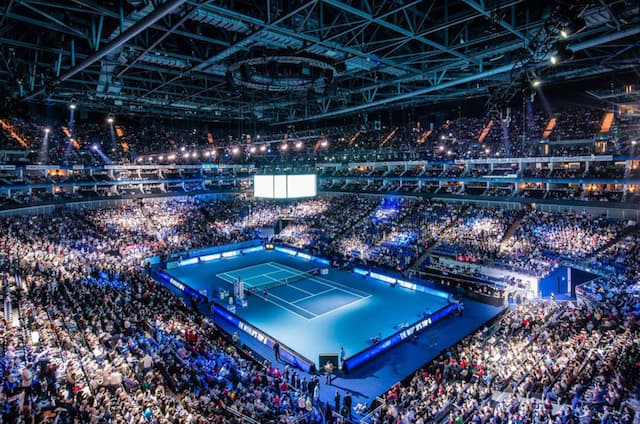Tennis Court Lighting: Standards from Recreational to Professional Play
The required lighting standards for illuminating tennis courts changes based on the standard of play ranging from recreational to professional levels. Tennis facilities must provide an even distribution of light to provide a well-lit playing area for both the players and spectators.

Recommended Products
Standard of Play
Illuminating a tennis court is determined by different organizations based on the level of competition being played on the court. These levels are often referred to as Class I, Class II, Class III, and Class IV.
*Note* Although many of the facilities may cross over lighting classes, lighting levels should be determined based on age and skillset. Facilities with a high number of older players will require a higher intensity lighting system
Class I | Class II | Class III | Class IV |
Professional | College | College | High School |
International | Tennis Clubs | High School | Tennis Clubs |
Satellite | Residential | Tennis Clubs | Parks & Recreation |
Challenger | Parks & Recreation | Residential | College |
College |
| Parks & Recreation |
|
Class I: International & National
- High level for international/professional grade – 450 lux
- Top level of competitive playing for a large amount of spectators
- Facilities generally include broadcasted tennis matches such as U.S. Open, Wimbledon, etc.
Class II: Club Competition & Commercial
- Medium level for club standard – 350 lux
- Mid-level competition, high level training, average viewing distances
- May include collegiate facilities primarily used for intercollegiate or recreational play
Class III: Recreational & Residential
- Lower level of play or recreational play – 250 lux
- Low- level competition, local, general training, school teams or recreational activities
Class IV: Recreational
- Lowest level of play
- Facilities strictly used for recreational play such as a public park
Tennis Organization Lighting Requirements for Professionals

The Association of Tennis Professionals (ATP) requires a standard of lighting for professional play and breaks down the requirements into two classifications: World Tour and Challenger Tour tournaments.
- ATP World Tour Tournaments: For world tour tournaments, the lighting must be evenly distributed on the court with a minimum light intensity of 100-foot candles (about 1076 lux). For televised matches, the minimum lighting level should average about 285-foot candles (about 3,067 lux).
- ATP Challenger Tour Tournaments: For challenger tour tournaments lighting must be evenly distributed on the court with a minimum light intensity of 70-foot candles (about 750 lux).
- Light Pole Mounting: According to the ATP, all light poles should be mounted so that the light is evenly distributed around the court. The mounting heights should be no lower than 40’ or no lower than other non-show court lights at the facility. If other non-show courts are 60’, for example, then all upgraded light fixtures should be 60’ high as well.
Stay Connected
Recommended Reading
LED tennis court lights offer many advantages over MH and HPS fixtures. You can choose from many options of lights to find the one that works best for your court.
Height, light intensity, and illumination across the playing surface can all impact the lighting design on a tennis court. This guide can help you compare your current lighting design to tennis court lighting standards.
When upgrading your tennis court lighting, consider spill light, glare, beam angle, and pole mounting height. Spill light refers to the light that shines past, or spills, beyond the sports facility and may bother neighboring occupants or adjacent properties.
Recommended Products
Receive special deals and more, right to your inbox
Receive special deals and more, right to your inbox





